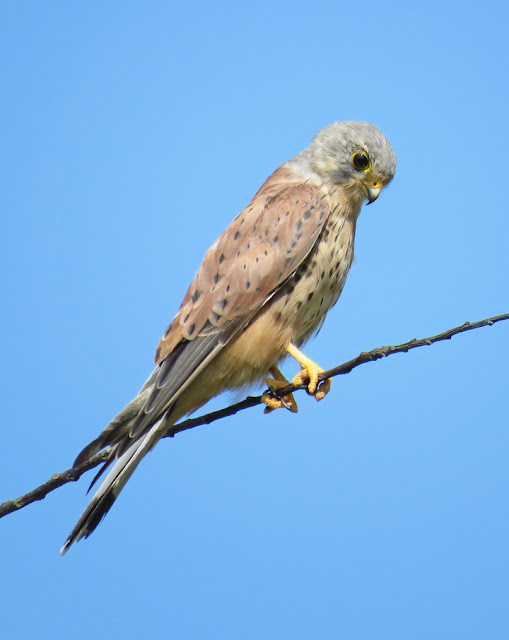Richard Of York Gave Battle In Vain

After a few of days of feeling 'under the weather' I needed to get out for some fresh air, so took the easy option of parking the car at Canons Farmhouse so that I could walk along the lane to Lunch Wood and back. When getting as far as the wood, I turned to walk back only to be faced with a solid wall of black cloud - there was no option but to huddle under a beech tree and wait for twenty minutes while it poured with rain. Compensation came in the form of a double rainbow as the weather headed east (above). Reeds Rest Cottages were the centre of the action, with a mobile flock of 130 Swallows that alternated between the overhead wires and Broad Field, all scattering when a patrolling Hobby cruised through. Two Wheatears were together on the recently trimmed hedgerow, close to the RRC barns (above), and a Peregrine was sat on one of the dead trees on Stoney Nob, looking quite cheesed off with life as the black clouds gathered (below). Warblers were thin on the ground, ...
















